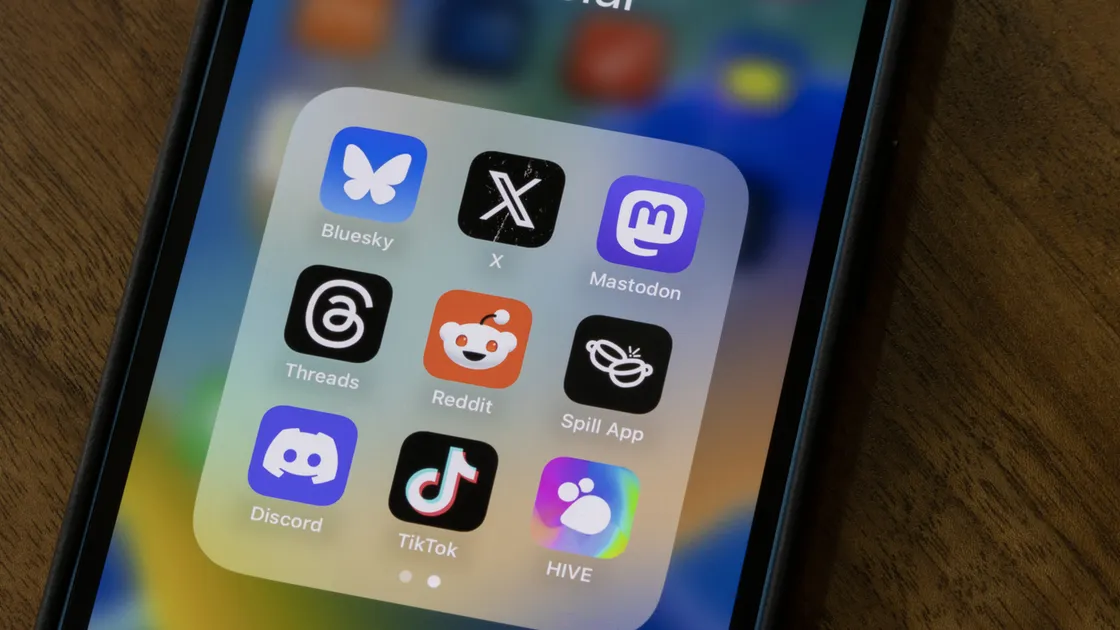YouTube × Influencer Marketing: Successful Case Studies and Key Points in Japan

In recent years, influencer marketing has become an essential promotional tool in Japan. Particularly, YouTube-based marketing has not only enhanced brand and service awareness but has also significantly impacted consumer purchasing behavior.
However, simply hiring influencers does not guarantee the expected results. The key to success lies in selecting the right influencers and understanding how to leverage YouTube-specific strategies effectively. This article provides a detailed explanation of the key points for YouTube-based influencer marketing in Japan, alongside actual successful case studies.
Influencer Marketing in Japan
Influencer marketing is a strategy that involves asking influencers with a significant presence on social media platforms to promote products or services. In Japan, its importance has steadily increased due to the widespread use of social media and video platforms.
On YouTube, influencers engage in various promotional activities such as product reviews, vlogs, and collaboration videos. Compared to TV commercials or web ads, YouTube allows for closer engagement with the audience, enabling products to be introduced in a more natural and authentic way. This leads to higher trust and increased consumer intent to purchase.
In Japan’s market, examples of influencer marketing are also common on platforms like Instagram and TikTok. Choosing the right platform for a specific target audience is crucial for achieving success.
The Demand for YouTube in Japan
According to the 2023 “Information and Communication Media Usage Time and Information Behavior Survey” by the Ministry of Internal Affairs and Communications, YouTube’s usage rate in Japan reached approximately 90%.
This shows that, even in a competitive video-sharing and streaming service market with the rise of new platforms like TikTok, YouTube continues to maintain its high popularity and usage rate.
In this context, utilizing YouTube for marketing is essential for companies to gain a competitive edge. According to a report by Motion Cue, 90% of consumers make purchasing decisions based on video content. This demonstrates the significant influence video content has on purchasing behavior.
This trend is also evident in B2B sectors. Research from GWI indicates that 5 out of 10 people use YouTube as a reference for making consensus decisions. This highlights the importance of actively engaging with consumers through platforms like YouTube in today’s highly competitive market to effectively promote products and services.
Comprehensive Explanation of YouTube Trends in Japan
The YouTube market in Japan has been steadily growing and plays an increasingly important role in corporate marketing strategies. In particular, recent trends have emerged that are worth noting:
1. The Rise of Short Videos
With the spread of YouTube Shorts, short-form, entertainment-heavy content has rapidly increased. In Japan, where smartphone viewing is predominant, there is a strong trend toward easily consuming short videos. As a result, Japanese viewers have shown high demand for YouTube Shorts, making it an extremely effective promotional tool for businesses.
By leveraging YouTube Shorts, companies can convey impactful messages in a short time, unlike traditional long-form videos. This format requires a strong visual appeal and elements that instantly capture viewers’ attention. To effectively engage Japanese audiences, companies must innovate and tailor their content accordingly.
Additionally, the monetization of YouTube Shorts ads, which began in early 2023, has opened up new opportunities for Japanese businesses. This new revenue model enables more aggressive marketing strategies using short videos. It allows companies to create a strong brand image and significantly boost product awareness.
Short videos also tend to lead viewers to watch more content, which amplifies their spread across the platform. This makes YouTube Shorts highly effective for rapidly increasing brand visibility in the Japanese market. By harnessing this feature, businesses can quickly scale brand recognition and product awareness.
2. Popularity of Vlogs and Lifestyle Content
In Japan, daily-life content that viewers can easily relate to has surged in popularity. Companies are increasingly collaborating with influencers to showcase products in a natural and relatable way. Japanese viewers value real-life experiences and empathy, which makes it effective when influencers incorporate products into their daily routines and lifestyles.
This type of content offers a sense of closeness and relatability, helping consumers see the product as a natural part of their own lives. When influencers introduce products within everyday contexts, viewers feel a deeper connection with the product without realizing they are being marketed to. This approach builds trust, making it particularly effective with Japanese consumers who prefer authenticity in advertisements.
3. Growing Demand for Specialized Content
The influence of YouTubers with expertise in fields such as beauty, health, business, and investment has expanded significantly in Japan. In these areas, viewers often seek trusted sources of information, and businesses are partnering with these influencers to create compelling, credible promotional content.
Japanese viewers tend to trust information from knowledgeable influencers, and collaborating with experts in specialized fields allows companies to produce highly persuasive marketing campaigns. For example, beauty or health products introduced by experts can build trust and encourage purchasing, while business and investment advice from established professionals can guide viewers’ purchasing or investment decisions.
By partnering with influencers who provide specialized content, companies can create more effective marketing strategies and build credibility in niche markets.
4. Real-Time Marketing via Live Streaming
Live commerce has gained significant traction in Japan, as companies and influencers engage with viewers in real-time while selling products. This method not only conveys the product’s appeal but also helps build trust by addressing questions and concerns instantly, thereby boosting purchase intent.
Japanese consumers place a high value on direct communication and interactivity. Live streaming provides an excellent opportunity for businesses to meet these needs. Additionally, offering limited-time deals or special discounts during live streams can further push viewers toward making purchases.
This form of real-time interaction is becoming a crucial promotional strategy in Japan, allowing businesses to deepen their relationship with their audience and provide an engaging shopping experience.
5. Emergence of AI and Automated Content Generation
Advancements in AI-driven video editing and voice generation technologies have started to play a significant role in content production for Japanese companies. These technologies have drastically improved the efficiency of video production and reduced costs.
AI-powered automatic editing and voice generation enable companies to produce high-quality content in a fraction of the time compared to traditional manual methods. This enhances marketing activities by making content creation more efficient and cost-effective. Furthermore, collaborating with influencers to create content has become easier and faster, as AI optimizes processes like video editing and sound enhancement.
For example, AI can automatically generate captions or adjust voice tones to make the content more accessible and appealing to viewers. This is particularly valuable when working with influencers, as it helps reduce production time and costs while maintaining high-quality content that resonates with the target audience.
In summary, YouTube Shorts, vlogs, specialized content, live streaming, and AI-driven content generation are key trends shaping the YouTube marketing landscape in Japan. Companies looking to succeed in this market should embrace these innovations to connect with consumers in more engaging and effective ways.
Key Points for Japanese Companies Starting Influencer Marketing on YouTube
When using influencers, it’s not enough to simply focus on the number of followers or the level of influence. To succeed, businesses need to choose influencers who align with their target audience and brand, and deliver messages in ways that resonate naturally with viewers.
Here are key points for businesses to maximize the impact of influencer marketing:
1. Selecting the Right Influencer for Your Target Audience
When choosing influencers, it’s essential to consider the compatibility between the influencer’s content and the product being promoted. Key factors include:
- Whether the influencer’s regular content aligns with the product being promoted.
- Whether the influencer targets an audience that uses or is interested in similar products.
When there’s a good match, the message will be conveyed naturally, making it easier to gain the audience’s trust and create stronger emotional connections. As a result, this leads to higher brand credibility and more effective conversions.
On the other hand, if the influencer’s image doesn’t align with the product or brand, it can cause discomfort among viewers, potentially raising suspicion of “stealth marketing,” which could backfire. Thus, it’s critical to carefully select the right influencer to avoid such risks.
2. Promoting in a Natural Way
Influencer marketing should not push the brand message forcefully; instead, the message should fit seamlessly with the influencer’s usual style of communication. Strongly branded content may seem overly promotional, leading to a sense of discomfort and mistrust among the audience.
It’s important to allow influencers to present the product naturally within their regular content. For instance, they can showcase the product’s actual usage or incorporate it into their daily lifestyle. This approach minimizes any sense of artificiality, allowing the audience to embrace the product without feeling marketed to.
Additionally, when influencers genuinely connect with the product, it boosts the credibility of the promotion. Companies should collaborate with influencers to determine the most organic way to present the product, allowing for a flexible and well-considered approach.
3. Building Long-Term Relationships
Instead of focusing on one-off collaborations, businesses should aim to build long-term relationships with influencers. Establishing ongoing partnerships enables companies to consistently deliver a cohesive brand message to the influencer’s audience, increasing trust over time.
When the same influencer repeatedly introduces a brand, followers begin to believe, “This product is truly good,” which raises purchase intent. Moreover, over time, influencers gain a deeper understanding of the brand and can present it more naturally, enhancing the authenticity of the promotion.
Developing these long-term relationships can also lead to brand loyalty, which brings long-term benefits that a short-term promotion can’t achieve. Companies should invest in communication to ensure that influencers truly understand and appreciate the brand, making them genuine advocates.
4. Measuring and Analyzing Effectiveness
It is essential to set clear KPIs (Key Performance Indicators) to measure the effectiveness of influencer marketing. For campaigns using YouTube, businesses should track indicators like:
- Click-through rate (CTR): Track the number of clicks on links in the video to see how many viewers take action.
- Conversion rate: Measure the percentage of viewers who purchase the product directly from the video.
- Engagement rate: Analyze likes, shares, and comments to measure audience interaction and strengthen relationships with viewers.
Incorporating other social media platforms like Twitter and Instagram can also enhance the effectiveness of influencer marketing. While YouTube offers powerful visual content to communicate product value, it is often more focused on a specific influencer’s subscriber base. Other platforms like TikTok and Twitter may have a broader reach and can be effective in expanding your marketing efforts.
Combining YouTube with other social media strategies can increase the impact of your campaign, particularly by reaching diverse target audiences. After each campaign, it’s crucial to conduct a detailed analysis and incorporate insights into future strategies to continually optimize your influencer marketing approach.
5. Using YouTube Effectively for Long-Term Engagement
By leveraging YouTube’s visual appeal and fostering long-term engagement with influencers, companies can create more powerful influencer marketing campaigns. Maintaining a consistent, authentic message across multiple channels will help strengthen brand loyalty, drive conversions, and achieve sustained success in the market.
Successful Influencer Marketing Case Studies on YouTube in Japan
Here are three notable examples of successful influencer marketing campaigns on YouTube in Japan:
1. Asahi Beer – “Kimagure Cook” Collaboration
Asahi Beer, a global company known for its alcoholic beverages and food products, collaborated with the popular YouTube cooking channel “Kimagure Cook” (with over 8.5 million subscribers). The collaboration focused on promoting Asahi’s “Nama Jokki Can,” a beer with foam that replicates the experience of drinking beer at a restaurant.
In this case, “Kimagure Cook” featured a short video where they cooked Korean BBQ (samgyeopsal) and enjoyed it with the beer. The video was not just a beer promotion but also integrated cooking content, minimizing the overt advertisement and keeping the focus on the recipe. The growing popularity of short videos on social media, which tend to attract more views than regular content, made this campaign an effective tool for reaching a wide audience.
2. Emma Sleep – “Luna” Collaboration
Emma Sleep, a mattress company known for its advanced sleep technologies, collaborated with influencer “Luna,” who shares her life through routine videos and vlogs, often focusing on her 1K6 apartment living situation. In this case, Luna featured Emma Sleep’s mattress in a short video.
The video highlighted several key product features:
- A comfortable sleeping experience that doesn’t sink too much, feeling like it gently envelops you.
- Pocket coils that minimize disturbance from movement.
- Easy-to-remove covers that help maintain cleanliness.
The video effectively showcased these practical benefits and used captions such as “easy to open, even by one woman,” which appealed to female viewers by suggesting the mattress was lightweight and easy to handle. This campaign reached its target audience by blending product information with relatable lifestyle content.
3. Coloso – “Naoki Saito” Collaboration
Coloso, an online platform offering creative courses in illustration, video design, and game development, partnered with “Naoki Saito,” a professional illustrator and YouTuber who shares drawing tutorials. The campaign involved Naoki introducing two illustration courses from Coloso.
What made this campaign effective was the incorporation of valuable content. Instead of merely promoting the courses, Naoki provided insights and tips from a professional’s perspective, making the video both informative and promotional. This added depth to the content, as it wasn’t just an ad but also a resource for those looking to improve their illustration skills.
The success of this campaign demonstrates that by adding value beyond the promotional message—such as expert advice—companies can create more effective marketing that resonates with their target audience.
Characteristics of Popular YouTubers in Japan
Japanese YouTubers have distinct traits that differentiate them from their international counterparts. Understanding these characteristics is crucial when formulating a marketing strategy:
- Emphasis on Trust and Empathy Japanese viewers prioritize authenticity and personal experiences over heavy-handed promotional content. They prefer genuine reviews and natural product introductions rather than overt advertising. Influencers who share their real-life experiences and honest opinions tend to build stronger relationships with their audience.
- Influencers Specializing in Niche Topics Many Japanese influencers specialize in specific fields such as beauty, fashion, gadgets, gaming, food, or lifestyle. When businesses choose influencers, it’s important to select those whose expertise and audience align with the brand’s products.
- High Expectations for Content Quality Japanese audiences have high expectations for the quality of content. Influencers who produce well-edited, engaging, and creatively structured videos are more likely to succeed in promoting products. This means that brands need to ensure their marketing content is polished and enjoyable to watch.
- Approachable and Relatable Communication Style Japanese YouTubers often maintain a friendly, approachable tone, making it easy for viewers to interact with them. Building a sense of community through comments and social engagement is a key part of maintaining high levels of audience engagement.
- Sharing Personal Values and Lifestyle Many younger YouTubers focus on sharing their lifestyle and personal values, particularly through vlogs or “A Day in My Life” content. This builds emotional connections with their audience, as viewers can relate to their experiences and feel personally connected.
- Collaborations and Sponsorships Many popular YouTubers in Japan engage in frequent collaborations and sponsor products. They often partner with brands for long-term sponsorships, creating ongoing relationships that increase both credibility and monetization opportunities.
Top 10 YouTube Channels in Japan for 2023 (by Total Views)
According to BitStar, the following are the top 10 YouTube channels in Japan for 2023, ranked by total views:
- 6.6354 billion views – FNN Prime Online
- 6.1893 billion views – Tokai On Air
- 5.7948 billion views – Mochimaru Diary
- 4.4459 billion views – Ayase / YOASOBI
- 4.2317 billion views – THE FIRST TAKE
- 3.4608 billion views – Comdot
- 3.4465 billion views – Fischer’s
- 3.3478 billion views – Snow Man
- 3.1819 billion views – Oricon
- 3.1311 billion views – Junya
These channels are classified into the following categories:
- Information-focused channels
- Entertainment content channels
- Lifestyle-sharing channels
What all these channels have in common is their ability to offer content that appeals to diverse viewer needs, gaining support from a wide range of audiences. Understanding the characteristics of these channels can help businesses choose the right influencers for their marketing strategies.
Key Takeaways for Influencer Marketing in Japan
YouTube influencer marketing has been rapidly growing in Japan and has proven to be an effective way to raise product awareness and influence purchasing behavior. However, to succeed, choosing the right influencer and leveraging YouTube’s unique features is crucial.
Japanese viewers tend to avoid content that feels overly commercial, so promoting products in a natural, organic manner is essential. Content that resonates emotionally with viewers is especially effective. Popular formats include short videos, vlogs, and specialized content, and long-term collaboration with influencers is key to sustained success.
By selecting influencers who align with your target audience and product, and focusing on maximizing engagement while controlling costs, businesses can achieve success in the Japanese market.
Partner with hotice: Your Trusted Influencer Matchmaker in Japan
At hotice, we connect international brands with carefully selected Japanese influencers to deliver impactful and risk-free campaigns.
We offer:
・Expert influencer matching by industry and objective
・Multilingual communication support
・Campaign planning and performance tracking
・Full legal and cultural compliance
hotice supports foreign companies entering the Japanese market with PR, using celebrities and influencers.
We have previous experience in selecting appropriate creators and PR strategies, so please contact us if you have any questions.






